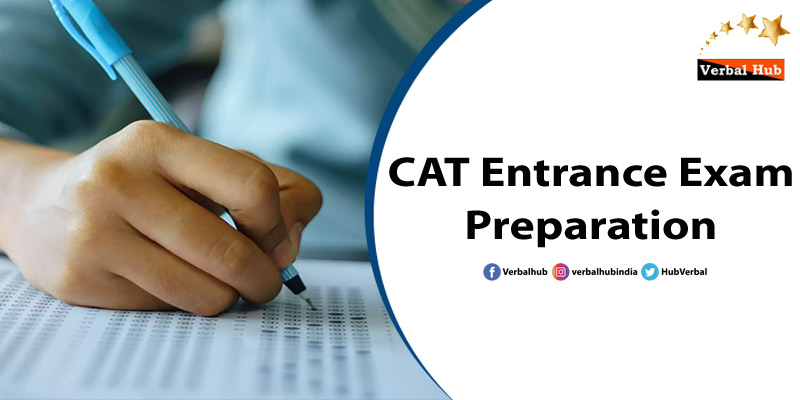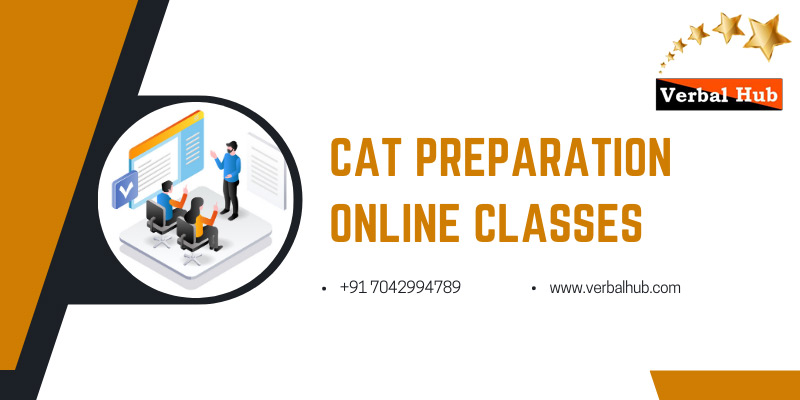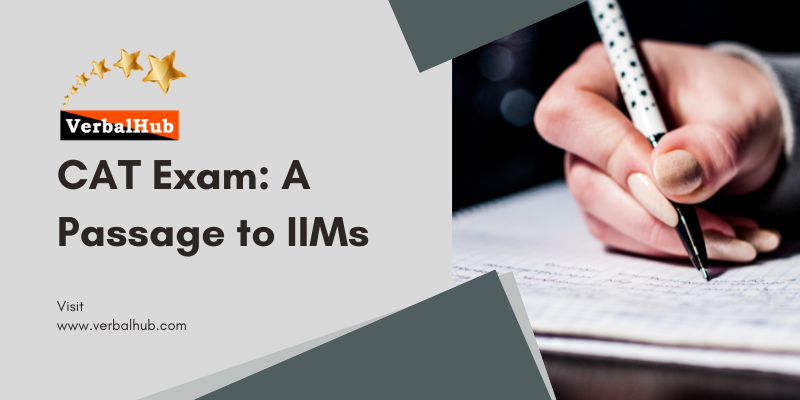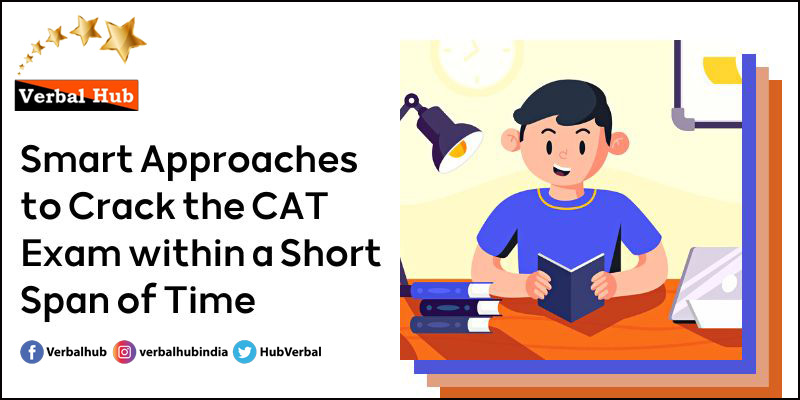

Para Summary for CAT Practice
If you are preparing for CAT VARC section, it is very important to be well familiar with para summaries for CAT. A CAT para summary question checks how effectively you are able to summarize complex information into a short and simple form, which is needed to excel in reading comprehension. Practicing para summary CAT questions makes you familiar with what the passage has to say and also improves your skill of choosing the right answers from options. Majority of students look for a para summary for CAT PDF to practice on the go and remember important strategies. To improve your skills appropriately, it is advisable to practice para summary for CAT practice questions from reliable sources and mock tests regularly.
While economic growth is often celebrated as a measure of national success, it is an imperfect indicator of overall well-being. Countries with high GDP may still suffer from stark income inequalities, environmental degradation, and inadequate access to basic services. A sole focus on economic expansion can lead to policies that prioritize short-term gains over sustainable development. Thus, a broader perspective incorporating social, environmental, and economic factors is essential to gauge a nation's true progress.
The advent of artificial intelligence has transformed various industries, but concerns about its ethical implications persist. Algorithms, while efficient, often inherit biases from the data they are trained on, leading to unintended discrimination. Additionally, the automation of jobs threatens employment, raising questions about economic stability. As AI continues to evolve, it is crucial to develop regulatory frameworks that balance innovation with ethical responsibility.
Human memory is not a perfect recording device; rather, it is a dynamic system that reconstructs past experiences. Research shows that memory is prone to distortions influenced by emotions, biases, and external suggestions. This malleability, while sometimes beneficial for emotional well-being, also raises concerns about the reliability of eyewitness testimonies in legal cases. Given these findings, it is crucial to question the absolute accuracy of human recollections.
The concept of free will has long been debated in philosophy and neuroscience. While many believe that humans consciously make choices, some studies suggest that brain activity indicating a decision occurs before individuals become aware of it. This raises questions about whether free will is merely an illusion. However, some argue that even if decisions are influenced by unconscious processes, humans still exercise control over their actions by reflecting on and modifying their behavior.
Cultural evolution, unlike biological evolution, progresses at a rapid pace, driven by human innovation and societal change. While biological evolution takes thousands of years to produce significant changes, cultural shifts can happen in a matter of decades or even years. However, the two are not entirely separate—biological predispositions can shape cultural developments, and cultural practices can, over time, influence genetic evolution. This interplay suggests that human progress is shaped by both inherited traits and learned behaviors.
The rise of remote work has redefined traditional workplace dynamics, allowing employees greater flexibility while posing challenges for teamwork and company culture. Some studies suggest that remote work improves productivity and work-life balance, while others highlight issues such as reduced collaboration and weakened social bonds among colleagues. To adapt, organizations must strike a balance between flexibility and maintaining a strong, cohesive work environment.
Despite significant advances in medical science, the placebo effect remains a fascinating phenomenon. Studies have shown that patients who believe they are receiving treatment often experience real improvements, even when given inactive substances. This suggests that perception and belief play a crucial role in healing. However, the exact mechanisms behind this mind-body connection remain unclear, prompting ongoing research into how psychological factors influence physiological responses.
The rapid spread of misinformation on digital platforms has become a major societal concern. False narratives, often amplified by algorithms that prioritize engagement over accuracy, can shape public opinion and influence decision-making. While some argue that stricter regulations are necessary to curb misinformation, others warn that such measures might infringe on free speech. This dilemma highlights the need for a balanced approach that combats falsehoods while protecting democratic values.
Para Summary for CAT Practice 2
Practice for the CAT exam needs good reading skills, and the para summary section needs to be mastered in order to do well in the verbal ability section. Reading regularly, paragraph summarization, and understanding what the author is attempting to say is a good practice routine for CAT para summary questions. Candidates need to practice condensing long passages into short summaries without missing key points in order to do well in para summary CAT questions. Students mostly look for study material like a para summary for CAT PDF to get access to useful practice material in a quick manner. Para summary practice regularly through such material can help a lot in improving comprehension and summarization skills to do well in the exam. Start para summary for CAT practice from here.
Like Timberland, Riedel, the pioneer wine glass makers, knocked me sideways when I first tasted Bordeaux from their specially designed glass. It was state-of-the-art and effective; if you ever doubted the curve of a wine glass could completely alter the wine’s taste, you only had to drink an identical wine from two differently designed wine glasses. I can assure you, a Bordeaux tasted from a Burgundy glass was completely different. Various grape varieties taste differently according to the glass used because they affect specific parts of the palate, so that if the wine is “thrown” towards a particular portion of the roof of the mouth, different taste sensations arise. Riedel glassware turn out their traditional quality products that are more or less still at the summit for their type. However, they now feel impelled to diversify in the desire to “expand the brand”, perhaps aiming to cover all bases while consumers still have a jangle in their spare-change pocket. Or perhaps, having enjoyed enormous growth off the back of a single, simple and inspired idea in the 1950’s, Riedel, like Timberland, is experiencing a midlife crisis of sorts.
What about the wider charge, that A levels have become too easy? The biggest changes have been in the way that the exams work. Good exam technique matters less. Retakes are freely allowed and questions are less cryptic, with more signposting about how to answer them. The aim is to find out what candidates know, rather than what they don’t. There is a great deal more coursework- with all the attendant dangers of plagiarism and cramming. Given all that, and how much more exam- centred pupils and teachers have become, it would be odd if results did not improve. In fact, they have done so since 1982, suggesting that the trend is not a deliberate political plot. Educational results do generally improve as countries get richer. But it is also true that content has changed, and not always for the better. This is particularly true in the GCSE exams, taken at 16, which are widely seen as undemanding. But there are problems at A level too; It’s possible to get an A in Maths without a solid grasp of calculus, for example. That used to be essential.
When I was little, children were bought two kinds of ice cream, sold from those white wagons with canopies made of silvery metal; either the two-cent cone or the four-cent ice-cream pie. The two-cent cone was very small, in fact it could fit comfortably into a child’s hand, and it was made by taking the ice cream from its container with a special scoop and piling it on the cone. Granny always suggested I eat only a part of the cone, then throw away the pointed end, because it had been touched by the vendor’s hand (though that was the best part, nice and crunchy, and it was regularly eaten in secret, after a pretence of discarding it).
Finally, while we still have some other past societies to consider before we switch our attention to the modern world, we must already be struck by some parallels between the Maya and the past societies. As on Mangareva, the Maya environmental and population problems led to increasing warfare and civil strife. Similarly, on Easter Island and at Chaco Canyon, the Maya peak population numbers were followed swiftly by political and social collapse. Paralleling the eventual extension of agriculture from Easter Island’s coastal lowlands to its uplands, and from the Mimbres floodplain to the hills, Copan’s inhabitants also expanded from the floodplain to the more fragile hill slopes, leaving them with a larger population to feed when the agricultural boom in the hills went bust.
A remarkable aspect of art of the present century is the range of concepts and ideologies which it embodies. It is almost tempting to see a pattern emerging within the art field or alternatively imposed upon it a posteriori—similar to that which exists under the umbrella of science where the general term covers a whole range of separate, though interconnecting, activities. Any parallelism is however, in this instance at least misleading. A scientific discipline develops systematically once its bare tenets have been established, named and categorised as conventions. Many of the concepts of modern art, by contrast, have resulted from the almost accidental meetings of group of talented individuals at certain times and certain places.
Every civilised society lives and thrives on a silent but profound agreement as to what is to be accepted as the valid mould of experience. Civilisation is a complex system of dams, dykes, and canals warding off, directing, and articulating the influx of the surrounding fluid element; a fertile fenland, elaborately drained and protected from the high tides of chaotic, unexercised, and inarticulate experience. In such a culture, stable and sure of itself within the frontiers of ‘naturalised’ experience, the arts wield their creative power not so much in width as in depth. They do not create new experience, but deepen and purify the old. Their works do not differ from one another like a new horizon from a new horizon, but like a madonna from a madonna.
Human Biology does nothing to structure human society: age may enfeeble us all, but cultures vary considerably in the prestige and power they accord to the elderly. Giving birth is a necessary condition for being a mother, but it is not sufficient. We expect mothers to behave in maternal ways and to display appropriately maternal sentiments. We prescribe a clutch of norms or rules that govern the role of a mother. That the social role is independent of the biological base can be demonstrated by going back three sentences. Giving birth is certainly not sufficient to be a mother but, as adoption and fostering show, it is not even necessary!
Our propensity to look out for regularities, and to impose laws upon nature, leads to the psychological phenomenon of dogmatic thinking or, more generally, dogmatic behaviour: we expect regularities everywhere and attempt to find them even where there are none; events which do not yield to these attempts we are inclined to treat as a kind of ‘background noise’; and we stick to our expectations even when they are inadequate and we ought to accept defeat: This dogmatism is to some extent necessary. It is demanded by a situation which can only be dealt with by forcing our conjectures upon the world. Moreover, this dogmatism allows us to approach a good theory in stages, by way of approximations: if we accept defeat too easily, we may prevent ourselves from finding that we were very nearly right.
Para Summary for CAT Practice 3
The para summary tests a candidate's skill to identify the principal point of a passage and put it forward in a clear and concise manner. Continuous practice of CAT para summary questions enhances logical reasoning and the skill to eliminate wrong choices in time. Para summary CAT questions being time-consuming and tricky, it is essential to identify the tone and purpose of the passage. Students like to practice a para summary for CAT PDF, which contains solved examples and expert advice. With proper practice on para summary for CAT, it is sure that the needed confidence and accuracy can be achieved to answer even the most complicated questions in the verbal ability section. Begin your para summary for cat practice from here.
In ‘justice as fairness,’ the original position is not an actual historical state of affairs. It is understood as a purely hypothetical situation characterised so as to lead to a certain conception of justice. Among the essential features of this situation is that no one knows his place in society, his class position or social status, nor does anyone know his fortune in the distribution of natural assets and abilities, his intelligence, strength, and the like. I shall even assume that the parties do not know their conceptions of the good or their special psychological propensities. The principles of justice are chosen behind a veil of ignorance. This ensures that no one is advantaged or disadvantaged in the choice of principles by the outcome of natural chance or the contingency of social circumstances. Since all are similarly situated and no one is able to design principles to favor his particular condition, the principles of justice are the result of a fair agreement or bargain.
Around 10 million Congolese died as a result of Belgian forced labor and mass murder in the early twentieth century; tens of millions perished in avoidable or enforced famines in British-ruled India; up to a million Algerians died in their war for independence, while controversy now rages in France about a new law requiring teachers to put a positive spin on colonial history. Comparable atrocities were carried out by all European colonialists, but not a word of condemnation from the Council of Europe. Presumably, European lives count for more.
Animals in general, are shrewd in proportion as they cultivate society. Elephants and beavers show the greatest signs of this sagacity when they are together in large numbers, but when man invades their communities, they lose all their spirit of industry. Among insects, the labours of the bee and the ant have attracted the attention and admiration of naturalists, but all their sagacity seems to be lost upon separation, and a single bee or ant seems destitute of every degree of industry. It becomes the most stupid insect imaginable and it languishes and soon dies.
The company’s coffee crop for 1998–99 totalled 8079 tonnes, an all time record. The increase over the previous year’s production of 5830 tonnes was 38.58%. The previous highest crop was 6089 tonnes in 1970–71. The company had fixed a target of 8000 tonnes to be realized by the year 2000–01, and this has been achieved two years earlier; thanks to the emphasis laid on the key areas of irrigation, replacement of unproductive coffee bushes, intensive refilling and improved agricultural practices. It is now our endeavour to reach the target of 10,000 tonnes in 2001–02.
It is important for shipping companies to be clear about the objectives for maintenance and materials management—as to whether the primary focus is on service level improvement or cost minimization. Often, when certain systems are set in place, the cost minimization objective and associated procedures become more important than the flexibility required for service level improvement. The problem really arises since cost minimization tends to focus on out of pocket costs which are visible, while the opportunity costs, often greater in value, are lost sight of.
Try before you buy. We use this memorable saying to urge you to experience the consequences of an alternative before you choose it, whenever this is feasible. If you are considering buying a van after having always owned sedans, rent one for a week or borrow a friend’s. By experiencing the consequences first hand, they become more meaningful. In addition, you are likely to identify consequences you had not even thought of before. May be you will discover that it is difficult to park the van in your small parking space at work, but that, on the other hand, your elderly father has a much easier time getting in and out of it.
Modern bourgeois society, said Nietzsche, was decadent and enfeebled—a victim of the excessive “development of the rational faculties at the expense of will and instinct.” Against the liberal rationalist stress on the intellect, Nietzsche urged recognition of the dark mysterious world of instinctual desires—the true forces of life. Smother the will with excessive intellectualizing and you destroy the spontaneity that sparks cultural creativity and ignites a zest for living. The critical and theoretical outlook destroyed the creative instincts. For man’s manifold potential to be realized, he must forego relying on the intellect and nurture again the instinctual roots of human existence.
Local communities have often come in conflict with agents trying to exploit resources, at a faster pace, for an expanding commercial industrial economy. More often than not, such agents of resource intensification are given preferential treatment by the state, through the grant of generous long leases over mineral or fish stocks, for example, or the provision of raw material at an enormously subsidized price. With the injustice so compounded, local communities at the receiving end of this process, have no recourse except direct action, resisting both the state and outside exploiters through a variety of protest techniques. These struggles might perhaps be seen as a manifestation of a new kind of class conflict.
Para Summary for CAT Practice 4
Para Summary for CAT is a crucial topic to study in the VARC section. It tests how well you comprehend a paragraph and how to summarize the essence. Regular practice of CAT Para Summary questions enhances your reading skill, critical thinking, and summarizing ability. Para Summary CAT study materials are primarily needed by most students since mastering these questions can significantly enhance their overall VARC scores. To make your study convenient, you can use a good Para Summary for CAT PDF with previous questions and sample summaries. For daily enhancement, it is also required to practice Para Summary for CAT by sectional tests, topic quizzes, and good practice sheets.
Modern consciousness is a complex and unstable construct, shaped by a confluence of memory, perception, and self-referentiality. Unlike traditional Cartesian dualism, which separates mind from matter, contemporary theories emphasize the embodiment of cognition—suggesting that the brain's neural patterns alone do not define consciousness. Instead, subjective experience arises through dynamic interaction between the body, the environment, and evolving cognitive patterns. This shift from disembodied mind to embodied mind has critical implications, especially in AI, where simulating human-like awareness demands more than neural replication.
While globalization has undeniably connected markets and accelerated growth for some nations, it has simultaneously entrenched economic disparities. The promise of uniform development remains elusive, as structural inequalities—rooted in colonial histories, labor arbitrage, and capital concentration—remain unaddressed. Critics argue that without systemic reforms, globalization merely reshapes, rather than resolves, the asymmetries of power and wealth.
Scientific progress is often celebrated for its capacity to extend human control over nature. Yet, this triumph is frequently achieved by ignoring or minimizing the ethical dimensions of inquiry. From gene editing to AI surveillance, the pursuit of knowledge tends to prioritize utility over morality. This utilitarian drive, unless balanced by ethical reflection, risks transforming science into a tool of dominance rather than understanding.
Art, traditionally viewed as an aesthetic endeavor, increasingly finds itself entangled in socio-political dialogues. No longer confined to galleries or elite patrons, it now emerges as protest, commentary, and resistance. The artist is no longer merely a creator of beauty but a curator of dissent. This evolution reveals that art does not just reflect reality—it can contest and reimagine it.
The literary canon has often been curated not merely by aesthetic merit but by institutional gatekeepers who define what is considered ‘universal’ or ‘timeless.’ This process frequently marginalizes voices that deviate from dominant ideologies—be they colonial, patriarchal, or Eurocentric. Even postcolonial literary criticism, which seeks to amplify suppressed narratives, can become complicit when it replicates hierarchies under the guise of inclusion. The canon, therefore, is not a neutral collection of great works but a contested site of cultural power, where inclusion often masks exclusion.
Identity is less a fixed essence and more a narrative—a story we tell ourselves and others to impose coherence on the flux of experience. However, these self-narratives are not freely constructed; they are shaped and constrained by cultural scripts, power relations, and historical memory. The modern obsession with authenticity, ironically, masks how deeply our identities are curated by structures we barely control. Thus, any claim to an ‘authentic self’ must contend with the paradox of selfhood being both personal and profoundly political.
While climate change discourse has been increasingly dominated by scientific data and predictive modeling, this technocratic framing often overlooks the political and ethical dimensions of climate action. Emphasizing carbon metrics and temperature targets may lend an aura of objectivity, but it risks depoliticizing issues of justice, responsibility, and historical accountability. Without acknowledging the unequal burdens borne by vulnerable populations, climate policy becomes a mathematical exercise divorced from moral urgency.
The celebration of technological innovation often conceals a deep discomfort with human finitude. As societies race toward automation, enhancement, and artificial intelligence, they do so not merely to improve efficiency but to overcome the vulnerabilities inherent to human existence—aging, error, and death. Yet, in seeking transcendence through technology, we may end up alienating ourselves from the very conditions that make us human. Progress, in this sense, is not neutral but shaped by existential anxieties and philosophical discontent.
Para Summary for CAT Practice 5
The para summary question or para summary CAT is a question that evaluates your reading, understanding, and summarizing the key point of a paragraph. Some students find it an easy question, but para summary skills for CAT can actually contribute significantly to your VARC score. The key is to determine what the author wishes to convey, what is the author's attitude, and the key point without expressing your own views. For practice CAT, para summary helps you learn to identify the key idea of a paragraph in a quick manner. For learning, utilize tools like the para summary for CAT PDF, which has past questions and model answers. To actually master this section, make para summary for CAT practice a part of your weekly routine. Try a mix of timed drills and careful consideration of answer choices. Practicing regularly helps you recognize the right summaries as well as help you rule out similar incorrect options in an effective manner.
The modern economy increasingly relies on platforms that do not produce goods or services themselves but orchestrate exchanges between users. This “platform capitalism” represents a shift from ownership to access, where value is generated not through labor or capital in the traditional sense, but through data extraction and behavioral prediction. However, these platforms are often cloaked in narratives of user empowerment and convenience, obscuring the exploitative dynamics that underpin them. The more users engage with these systems, the more valuable they become—ironically turning participation into unpaid labor, monetized without consent or transparency.
Historical narratives often present technological innovation as a linear process of improvement—each invention surpassing the last, leading humanity toward progress. However, this notion ignores the deeply contingent, nonlinear nature of discovery. Many technologies we now take for granted emerged not from grand design but from accidents, repurposing, and even failure. What’s more, the cultural, political, and economic environments in which innovations occur shape not only what is invented, but how it is received and remembered. To understand innovation, then, is to acknowledge that it is not merely a technical process but a social one—embedded in the messiness of human contexts.
Environmental conservation is increasingly framed in economic terms—ecosystems are assigned monetary value, and biodiversity is treated as natural capital. Proponents argue that this approach makes nature legible to markets and policymakers, thereby incentivizing preservation. Critics, however, caution that this commodification reduces complex ecological relationships to simplistic financial metrics, ignoring intrinsic value and non-market forms of knowledge. When forests are worth saving only because they offset carbon or provide tourism revenue, conservation becomes contingent upon profitability, risking the neglect of those aspects of nature that resist quantification.
The notion of a universal scientific method has long underpinned the authority of science, suggesting a consistent, objective procedure applicable across disciplines. Yet, closer scrutiny reveals that methodologies differ significantly between fields and are influenced by historical, cultural, and institutional factors. The tools and assumptions of particle physics, for instance, bear little resemblance to those of evolutionary biology or social psychology. Recognizing this plurality doesn’t undermine science—it reveals its adaptive richness. The danger lies in treating the scientific method as monolithic, thereby silencing alternative epistemologies that could enrich inquiry.
Efforts to define art often oscillate between objective criteria and subjective experience. While institutions attempt to anchor artistic value in historical importance, technique, or innovation, personal reactions to art remain deeply emotional, variable, and culturally embedded. This tension becomes particularly evident in debates over what constitutes "real" art, revealing the influence of power, gatekeeping, and shifting tastes. Perhaps art’s significance lies not in any fixed definition but in its capacity to provoke, challenge, and evolve—resisting neat categorization while reflecting the complexities of the human condition.
The modern obsession with productivity is not just a workplace phenomenon—it is a cultural ideal deeply entwined with identity and self-worth. Time, once considered cyclical and communal, has become individualized and optimized, carved into slots of measurable output. Even leisure is instrumentalized: hobbies are monetized, rest is scheduled, and relaxation must be justified. This relentless drive for efficiency creates an illusion of control but leaves little room for introspection, spontaneity, or unstructured experience—elements essential for creativity and mental well-being.
Cultural appropriation, often viewed as mere borrowing or appreciation, overlooks the asymmetries of power involved when dominant groups adopt elements of marginalized cultures. While fusion can be enriching, the erasure of context and the commodification of tradition often serve to reinforce inequalities. What is celebrated as “diversity” can, in fact, obscure ongoing histories of exploitation and exclusion.
The concept of the nation-state, once seen as the pinnacle of political organization, is increasingly being questioned in an age of transnational challenges. Climate change, pandemics, and digital information flows defy geographic boundaries and require global coordination. Yet, the resurgence of nationalism and border-centric politics signals a deep anxiety about identity and control. This tension reveals the limitations of current governance models in addressing global crises.
Para Summary for CAT Practice 6
Para summary practice is essential for excelling in the CAT VARC section. By regularly working on questions and using resources like a para summary for CAT PDF, you can improve your summarization and critical thinking skills.
[Placeholder Passage for Question 41]
Para Summary for CAT Practice 7
One of the toughest but crucial sections of CAT VARC is para summary. It tests your ability to grasp the central idea of a paragraph and state it in simple and clear words. Questions on CAT practice for para summary, also known as para summary for CAT practice, improve your ability to comprehend and think. To master the CAT para summary section, read editorials and rewrite them in your own words. To download para summary for CAT pdf with previous questions and sample answers, you can do so as well. To practice para summary CAT on a daily basis, include para summary practice sessions in your study schedule and review your answers carefully to ensure that they are ready for the exam.
The dichotomy between nature and culture has long structured Western thought, portraying nature as raw, passive, and external, while culture is seen as active, transformative, and distinctly human. This binary not only distorts ecological realities but also delegitimizes alternative knowledge systems—particularly Indigenous cosmologies that conceive nature and culture as deeply entwined. These traditions often resist the objectification of nature, instead emphasizing relationality, reciprocity, and stewardship. The imposition of Western frameworks through colonial science has frequently silenced such epistemologies, framing them as primitive or irrational. Yet, in the context of climate crisis and ecological collapse, these so-called "alternative" systems offer crucial insights into sustainable living. Revaluing them is not an act of nostalgia but a strategic epistemic shift.
In modern epistemology, certainty is increasingly viewed as a regulative ideal rather than an attainable state. The human cognitive apparatus, limited by evolutionary constraints, does not apprehend objective reality in its totality but constructs provisional models based on pragmatic survival needs. Consequently, knowledge becomes less a mirror of nature and more an adaptive interface—fluid, corrigible, and context-dependent. Yet, paradoxically, it is this very instability that allows for the continual refinement of human understanding, as error and approximation fuel epistemic evolution.
Technological utopianism often obscures the socio-political infrastructures that enable or constrain innovation. Celebrations of disruption and progress frequently ignore how technological access, governance, and ethical oversight are deeply stratified along economic and geopolitical lines. Without attending to these underlying asymmetries, visions of a universally emancipatory future risk reinforcing the very inequalities they purport to dissolve.
The modern valorization of speed, efficiency, and immediacy fosters a temporal anxiety that corrodes reflection and deliberation. In privileging acceleration, contemporary societies risk reducing thought to reaction, eroding the contemplative capacities necessary for ethical and democratic engagement. Thus, slowness, often derided as inefficiency, emerges as a critical countervalue against the tyranny of haste.
In the age of digital hyper-connectivity, the nature of human attention has undergone a profound transformation. The internet, with its endless notifications, infinite scrolls, and algorithmically curated feeds, has reshaped not just how we consume information, but how we relate to time, self, and others. Attention, once considered a finite and valuable cognitive resource, has been fractured into micro-moments, constantly redirected by stimuli engineered to exploit psychological vulnerabilities. This has given rise to what some scholars call the "attention economy," where human focus is commodified and traded like currency. However, this commodification has ethical implications beyond productivity loss — it alters agency itself. When attention is externally manipulated at scale, the very capacity to reflect, resist, or act autonomously becomes compromised. Thus, reclaiming attention is not merely a matter of personal discipline but a political and philosophical imperative.
The growing discourse around artificial intelligence (AI) often revolves around its technological potential and economic utility, but this emphasis frequently obscures the political and epistemological stakes involved. AI systems, far from being neutral instruments, are shaped by the historical biases and power structures embedded in the data they consume and the institutions that deploy them. When algorithms make decisions—about hiring, policing, or creditworthiness—they encode societal assumptions under a veneer of objectivity. This grants legitimacy to decisions that might otherwise be contested if made by human agents. Therefore, any critical engagement with AI must interrogate not only its technical architecture but also the normative frameworks it reproduces. Without such scrutiny, AI risks becoming a tool for reifying inequality under the guise of innovation.
Environmental degradation is not merely a technical failure of regulation but a manifestation of deeper epistemic distortions—where nature is construed as inert, external, and infinitely exploitable. This instrumental view, embedded in dominant economic and scientific paradigms, alienates humanity from ecological interdependence. A genuine environmental ethic, therefore, demands not only policy reform but a radical reimagining of humanity’s ontological relationship with the non-human world.
Historical narratives often present the past as a linear unfolding toward the present, implying inevitability and progress. However, this teleological framing obscures the contingent, contested, and ruptured nature of historical events. By privileging continuity over discontinuity, traditional historiography risks sanitizing history’s inherent volatility, reducing its interpretive openness.
Our Teachers

Dr. G Ravindra Babu
Quant Faculty
Ph. D in Mathematics Asian International University|| Mathematics Professor at Gitam University || Ex-Mathematics Professor SRM University Amaravathi || MBA in finance Acharya Bangalore B School || GMAT Quant 51, CAT Quant 99.58 %tile, GRE Quant 170 || 21 Different Teaching Certification || Believe in “Education is the mother of leadership”
view details

Dr. Rengarajan Parthasarathy
CAT Faculty
Ph. D in Mathematics from YCM University|| Mathematics Professor at Symbiosis International|| Author of Business Ethics || Ex-CAT Exam Syllabus Advisor in IIM || MBA & MPM from Symbiosis International (Deemed University) || College Topper in Mathematics in Ferguson College || Six Scholarships in Mathematics || 15 Years CAT Coaching, GMAT Coaching and GRE Coaching Experience|| UGC NET Qualified || GMAT Q51, V38 & CAT Q 99.31 & DILR 99.38 %tile, GRE Quant 170 || Believe in “Higher Education Shapes The World.”
view details

Dr. Nisha Tejpal
Verbal & AWA Faculty
Ph. D in English || Published a paper in English in ‘Research Journal of Philosophy and Social Sciences’ || MCA and B.Ed CCS University || A subject expert in Verbal Teaching || 10,000 Plus Essays Analysis || CTET and NET Qualified || More than 15 years of Experience || A writer, Author and Poet || Believe in “Think Beyond the Universe”
view details
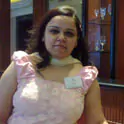
Dhrithi Khattar
Verbal Faculty
A subject expert in Verbal Aptitude || More than 15 years of Experience || MBA in HR& Marketing & MA in Economics || Active Member of Hindu Alumni Association || Functional Member of Delhi ||Management Association (DMA) || Operational Member of All India Management Association (AIMA) ||The President of Key Club ||An active member of the French Club ||Gold Seal from California Scholarship Federation.
view details
M. U. Mir
DILR & Quant Faculty
A subject expert in Quantitative Aptitude Training || GMAT Q 51 & CAT DILR 99.75 %tile || GATE 2020 Qualified || M. Tech & B. Tech University Toper (1st Rank) || Awarded by Gov of Odisha, Bihar and J& K for the project Magnetic Floating Model || Ex-Quant Subject Expert in Arihant Publication || An Educationist and Social Worker || Believe in “Education is power”
view details

C. S. Rajawat
CAT Faculty
M. A in Mathematics CCS University|| M. Tech from SRM University || Visiting Mathematics Faculty CCS University ||Experience of 11 Years of CAT Coaching || District Topper in 10th & 12th || Best Teacher Awardee in 2021 & 2022 || CAT Quant 99.43 %tile || Discovered a new Theorem based on HCF in Math || Founder of C. S. Classes ||Believe in “Teaching and Training is an Art.”
view details
Dr. S.K. Singh
PTE/IELTS/CELPIP Expert
Ph. D. English Dr. B. R. Ambedkar University || Delhi & Center Government School Mentor || Founder of Entrepreneur & Learning Startup || IELTS & CELTA Certified from British Council || PTE Certified from Pearson...
view detailsRishabh Arora
PTE/IELTS/CELPIP Expert
MBA in HR International Institute of Management Sciences || PTE Certified from Pearson Test of English|| IELTS & CELTA Certified from British Council || BCA from Integral University || PTE 87 in 2017, IELTS 8.5 in 2018
view details
Jyoti Joshi
IELTS Trainer
Master in English (MA) and Bachelor in Education (B.Ed) || Certified Trainer || IELTS Speaking 9.0 Band holder || Believe in “Great teacher can inspire hope, ignite the imagination, and instill a love of learning”
view details
Surbhi Arora
IELTS / PTE Expert
English Language Expert || More than 3 years of Experience || M.A plus B. Ed Delhi University ||Author, Writer & Classical Singer|| Believe in “Language Language Learning & Teaching is Fun”
view details

Dilip Kumar Rathore
Quant Trainer
A business developer and genius in mathematics || Highly experienced || Master in Maths || well-verse in IT || Believe in “The art of teaching is the art of assisting discover”
view details

Imaam Hasan
Communication Expert
Master in English || Journalist and writer || Certified IELTS & PTE Trainer || A social educater and influencer || Believe in “Education is the movement from darkness to light”
view details



